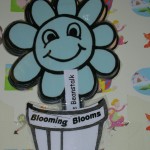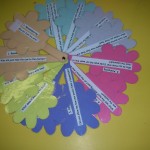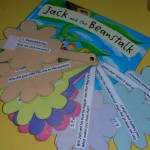Lasswade Primary School are doing some interesting work across the school with Critical Literacy as a result of a one day training day for Midlothian staff (Primary and Secondary school teachers and librarians – not sure if any librarians actually attended) as part of their CPD. The training Critical Literacy – Raising achievement through a Curriclum for Excellence was organised and run in partnership with the University of Edinburgh with a focus on “raising achievement across the curriculum through an action research approach to critical literacy ..”.
The school formed a working group to plan and implement Critical Literacy which is seen as
“the way that we interact with and make meaning from different texts” and “involves the reader analysing and engaging with a text”.
Text being defined as anything which communicates meaning. For early years this includes looking at pictures for clues and forming opinions of characters in stories.
Critical questions to ask of texts include: construction of characters; gaps and silences; power and interest; whose view: whose reality?; and questioning the composer.
The working group decided to use the Scots focus month to plan and implement Critical Literacy mainly at second level:
- P5 – Scotland Today; identifying and explaining difference between fact and opinion (Loch Ness Monster) ; looking closely at text to see how the author influences the reader to take their point of view about the character (Granny Porage & Greyfriars Bobby); to predict what might have happened if circumstances had been different in the story – different ending, implications of different ending(Greyfriars Bobby).
- P6 – Scotland Homecoming Video: made their own Scotland homecoming Video
- P7 – The Broons: recognising bias, views and values of characters, view of the world the text is presenting, understanding the purpose of text
Support for Learning Teacher – Language programme for Scots Focus present Day:
- Primary 3 – What do we know about Water
- Primary 4 – What do we know about Trams
- Primary 5/6 – What do we know about Shortbread
They found that:
- the children were motivated
- enjoyed engaging with different texts
- used critical thinking – very quickly began to question.
They are now looking at P1 – P4. Louise Donaldson who is part of the working group is now the teacher for Primary 1 – and is using Goldilocks and the Three Bears to look at the text from different points of view – What would you do? Using role play and looking at moral issues. What would they (the children) have done in her (Goldilocks) shoes:
- Goldilocks went into a house that she didn’t know – would you?
- She sat in chairs which broke etc.
It’s interesting to hear how this same story has been looked at from a critical literacy point of view / questions here compared to Kilmacolm Nursery Blooming Blooms questions. Both trying to encourage children’s critical thinking and questioning. It was also interesting to hear about critical literacy and see its important relationship to information literacy.
It was also interesting to hear about the work of the Support for Learning Teacher and to hear of how children start in Primary 1 learning sounds and key words. They require support from the Support Learning teacher if the know less than 10 words. In Primary 2 the Support for Learning Teacher sessions are about spelling and phonics – checking letters.
Discussions also took place about when children start to copy text to record information they have found. One solution offered to avoid copying text from books is:
- children pose question
- highlight bullet points
- close books
- use bullet points and put information into their own words.
My thanks to Lasswade Primary School, the Head Teacher, Louise Donaldson and her colleagues Hazel Stewart (Support for Learning Teacher), Audrey McGlade and her P5 class for allowing me into their world and sharing what they are doing with me.



